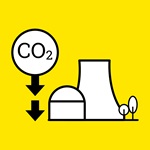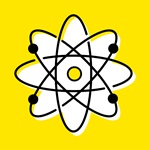
The importance of nuclear in the context of the energy crisis: the answers to your questions
Why are our electricity bills going to go up when we have nuclear power in France?

The rise in energy costs in Europe is huge but France is better off than its European neighbors thanks in particular to nuclear and to the cap on gas and electricity prices. The French government has effectively extended the tariff shield in 2023 with an increase in prices for consumers kept to 15 % for gas and electricity. In Germany, households are paying electricity bills which are much higher than in France, with a difference now of approximately 75 %.
The tensions on energy markets date back to at least 6 months prior to the invasion of Ukraine. The upward trend in the wholesale prices of electricity has been visible since June 2021, shifting from approximately € 60-70/MWh to levels of around € 200/MWh at the start of October 2021. Already then, it could be seen that the factor driving this rise in electricity prices was the European electricity pricing mechanism, which consists of aligning prices with the last plant called, which is generally a gas-fired plant and not a nuclear power plant. This mechanism is very disadvantageous for France which benefits from a relatively low electricity price thanks in particular to its large fleet of existing nuclear power plants.
But the price of electricity is also linked to movement in the gas and crude oil markets. Well before the war in Ukraine, the post-COVID period had resulted in an imbalance between supply and demand in energy, with demand which recovered much more quickly and supply held back by under-investment in production exploration. The latter is in part due to forecasts of a slowdown in demand for carbon energy (oil, gas). Beyond this cyclical factor which was set to peter out, it was possible to see some structural factors which indicated that the era of cheap electricity was over: a decreasing trend in European gas production, growing global demand and competition between Europe and other countries such as Russia and China.
It is said that nuclear contributes to France's energy sovereignty, so why is our country now finding itself threatened with electricity shortages?
 It is true that, thanks to nuclear energy, France is independent for more than 50 % of its energy needs and nuclear accounts for 70 % of French electricity generation. However, the energy crisis goes beyond France: it is a European issue. The European Union has allowed itself to become more and more vulnerable over time, importing most of its energy, unlike the USA which can in particular rely on its crude oil and shale gas. This has resulted in heavy energy dependence of the EU. Because gas was cheap, the EU bought more and more of it, allowing itself to become vulnerable, while shutting down controllable power generation resources (coal-fired or nuclear power plants).
It is true that, thanks to nuclear energy, France is independent for more than 50 % of its energy needs and nuclear accounts for 70 % of French electricity generation. However, the energy crisis goes beyond France: it is a European issue. The European Union has allowed itself to become more and more vulnerable over time, importing most of its energy, unlike the USA which can in particular rely on its crude oil and shale gas. This has resulted in heavy energy dependence of the EU. Because gas was cheap, the EU bought more and more of it, allowing itself to become vulnerable, while shutting down controllable power generation resources (coal-fired or nuclear power plants).
We have not been naive, we have been greedy"
Ursula von der Leyen, President of the European Commission
In Europe, the situations are very disparate. Some countries are in a situation of hyper-dependence such as Germany, which was 50-60 % dependent on Russian gas and which did not have any liquefied natural gas (LNG) terminal to import liquefied natural gas before the crisis started. The same goes for Hungary which is dependent on Russia for more than 90% of its energy. France is dependent on Russian gas for less than 20 % of its needs because it uses less gas than the European average for heating. Thanks to nuclear, France has a limited demand for gas and has taken advantage of its coastline to install LNG terminals.
European efforts to free itself from dependence on Russian gas imports involve the diversification of energy sources, whilst taking energy decarbonization into account (European objective of carbon neutrality by 2050).
Scenarios for the Electricity Transport Network in France (Réseau de Transport d’Électricité – RTE) indicate a high risk of tensions on the power grid in January 2023. The President of the French energy regulation commission (Commission de Régulation de l’Énergie – CRE), Emmanuelle Wargon, says that "there are possible risks of power cuts: these depend on the availability of nuclear reactors, as well as the weather and how much electricity the French consume". The French government has launched an Energy saving plan (“Plan de sobriété énergétique”) to encourage companies and private individuals to turn their heating down to 19°C.
Why are more than half of our power plants shut down at a time when we need them most?

24 out of France's 56 EDF reactors are indeed shut down for maintenance and for inspections relating to the phenomenon of proven or suspected corrosion under stress conditions (Corrosion Sous Contrainte – CSC).
The power generation shortfall in France due to unavailability of the nuclear fleet is of the order of 100 TWh (Terawatt-hours).
Some of France's power plants are shut down for a number of reasons:
- the COVID crisis has held up maintenance operations scheduled for 2020 and which have of course been re-scheduled to be carried out throughout 2022;
- the Large-scale modernization (Grand Carénage) program, which is a major project and industrial program to reinforce nuclear reactors, is requiring longer maintenance shutdowns;
- the discovery of the phenomenon of corrosion under stress conditions for the most recent reactors means inspections and repair works that have to be carried out.
At this stage, for 2022, EDF considers that it is not necessary to expect further reactor shutdowns. The group is also indicating that its estimation of nuclear power generation for 2022 is going to be adjusted to 280-300 TWh compared to 295-315 TWh previously.
Is this energy crisis not overshadowing our goals of decarbonizing energy sources?
 European countries, which are facing one of the worst energy crises in their history, cannot put the climate emergency to one side any longer. Europe has in addition stated some climate goals, namely zero greenhouse gas emissions by 2050 and some very precise goals for 2030 (compared to 1990 levels): a 55 % reduction in GHGs, a 32 % share of renewable energies and a 32.5 % improvement in energy efficiency. In order to meet these targets, the EU must divest from fossil fuels and mobilize capital to finance the investments to shift to "green" technologies that are more environmentally friendly. This is the challenge of the EU taxonomy which recognizes the place of nuclear in green investments, though not without conditions that need to be met.
European countries, which are facing one of the worst energy crises in their history, cannot put the climate emergency to one side any longer. Europe has in addition stated some climate goals, namely zero greenhouse gas emissions by 2050 and some very precise goals for 2030 (compared to 1990 levels): a 55 % reduction in GHGs, a 32 % share of renewable energies and a 32.5 % improvement in energy efficiency. In order to meet these targets, the EU must divest from fossil fuels and mobilize capital to finance the investments to shift to "green" technologies that are more environmentally friendly. This is the challenge of the EU taxonomy which recognizes the place of nuclear in green investments, though not without conditions that need to be met. It is true that nuclear energy emits 70 times less CO2 than coal, 40 times less than gas and even… 4 times less than solar energy. Nuclear electricity is thus low carbon. But in view of the current geopolitical context and to counter any potential risk of shortages in Europe, natural gas - which is the least polluting of fossil fuels - has emerged as a transitional alternative.
Is nuclear power still an energy of the future?
Did you know?
"Nuclear is a continuously controllable, competitive and resource-efficient power source as 96 % of the fuel used is recyclable".

We are seeing ever clearer recognition in public opinion and internationally of the role of nuclear in the fight against global warming and in building energy sovereignty.
In their latest reports, intergovernmental agencies (Intergovernmental Panel on Climate Change - IPCC, International Energy Agency - IEA) are increasingly seeing nuclear as an essential lever in the reduction of greenhouse gas (GHG) emissions. At the end of September 2022, the International Atomic Energy Agency (IAEA) revised its forecasts upwards, and now expects 870 GW of nuclear power in 2050. Previously, it was predicting 790 GW, compared to 390 GW currently.
In France, the announcements made by the President of the Republic in Belfort, in February 2022, relaunched the nuclear program with the construction of 6 EPR2s, the first of which is scheduled to be operational by 2035, and studies for a further 8 EPR2s. The plan also makes provision for the extension of the lifetime of existing reactors, in particular the 900 MW series, as well as investments of 1 billion euros between now and 2030 to be allocated to the development of advanced reactors: innovative small-scale reactors.
In the USA, for several years now, there has been a strong dynamic to accelerate innovation in the sector. With a program of more than $ 4Bn of subsidies, the USA is banking on the development of advanced reactors by supporting start-ups. The ambition is clear: to regain sovereignty in nuclear, with the same method which has made it possible to see the emergence of SpaceX in the space sector or Tesla in the automotive sector! The level of support has been stepped up with the invasion of Ukraine and the recent inflation act which earmarks $ 700 M for the fabrication of highly enriched fuel for these reactors.
Other countries are once again putting their faith in nuclear as a response to the energy crisis. Over the past few months, to cite just 3 examples:
- Belgium has chosen to extend the lifetime of certain of its reactors;
- in the Netherlands, the new government's coalition agreement envisages the construction of two nuclear power plants;
- the UK has decided to triple installed nuclear capacity between now and 2050, as part of a new energy security strategy. The government is thus aiming for 24 GW of nuclear capacity by 2050 (compared to 7 today).
Did you know?
"62 reactors are under construction worldwide. China has commissioned 35 reactors between 2010 and 2020"
The arrival of a new generation of innovative reactors, such as SMR/AMR-type small modular reactors, will bring nuclear power into a new era. More compact and less costly to manufacture with a fuel cycle allowing the quantity of waste to be reduced, they complement EPRs well.
- Understanding Nuclear Energy Nuclear energy makes it possible to produce low-carbon, competitive, and continuous electricity
- Global warming: 7 good reasons for turning to nuclear energy Nuclear energy presents many advantages in the current context of the fight against global warming: discover 7 good reasons to capitalize on this form of energy.
- Nuclear energy: An asset for France’s energy independence According to a recent BVA survey for Orano* on how the French public perceives nuclear energy, 53% of respondents consider it to be essential for France’s energy independence. And it’s true! Nuclear energy gives France an energy independence of 56%, one of the highest independence rates in the European Union.